Scientists detect never-before-seen radio waves from nearby stars and distant galaxies
Friday, 20 August 2021 08:30 Scientists have measured thousands of nearby stars and far away galaxies that have never been identified before at radio wavelengths, while studying a galactic body that neighbours our own Milky Way galaxy - the Large Magellanic Cloud.
Led by Keele University PhD student Clara M. Pennock and Reader in Astrophysics, Dr Jacco van Loon, the international team of researchers used the Australia
Scientists have measured thousands of nearby stars and far away galaxies that have never been identified before at radio wavelengths, while studying a galactic body that neighbours our own Milky Way galaxy - the Large Magellanic Cloud.
Led by Keele University PhD student Clara M. Pennock and Reader in Astrophysics, Dr Jacco van Loon, the international team of researchers used the Australia New chip scale atomic clock best yet for extreme environments
Friday, 20 August 2021 08:30 Advanced military platforms, ocean-bottom survey systems and remote sensing applications all require precise timing for mission success. Chip Scale Atomic Clocks (CSACs) ensure stable and accurate timing even when Global Navigation Satellite Systems (GNSS) time signals are unavailable. Helping industrial and military system designers to meet this requirement, Microchip Technology Inc. has announ
Advanced military platforms, ocean-bottom survey systems and remote sensing applications all require precise timing for mission success. Chip Scale Atomic Clocks (CSACs) ensure stable and accurate timing even when Global Navigation Satellite Systems (GNSS) time signals are unavailable. Helping industrial and military system designers to meet this requirement, Microchip Technology Inc. has announ NASA watches water to help grow our groceries
Friday, 20 August 2021 08:30 Every day - up to thirty times a day, in fact - one of Mark Mason's employees at Nature's Reward Farms in Monterey County, California brings him the results of a soil test for discussion.
Mason supervises fertilizer and irrigation for the farm's 5,000 acres along California's Central Coast, which is nicknamed "America's Salad Bowl" and is one of the most productive and diverse agricultural
Every day - up to thirty times a day, in fact - one of Mark Mason's employees at Nature's Reward Farms in Monterey County, California brings him the results of a soil test for discussion.
Mason supervises fertilizer and irrigation for the farm's 5,000 acres along California's Central Coast, which is nicknamed "America's Salad Bowl" and is one of the most productive and diverse agricultural FSU researchers refine estimate of amount of carbon in Earth's outer core
Friday, 20 August 2021 08:30 New research from Florida State University and Rice University is providing a better estimate of the amount of carbon in the Earth's outer core, and the work suggests the core could be the planet's largest reservoir of that element.
The research, published in the journal Communications Earth and Environment, estimates that 0.3 to 2.0 percent of the Earth's outer core is carbon.
Thoug
New research from Florida State University and Rice University is providing a better estimate of the amount of carbon in the Earth's outer core, and the work suggests the core could be the planet's largest reservoir of that element.
The research, published in the journal Communications Earth and Environment, estimates that 0.3 to 2.0 percent of the Earth's outer core is carbon.
Thoug Greenland, Antarctica will respond differently to increased future warming
Friday, 20 August 2021 08:30 The recently released IPCC Sixth Assessment Report predicts faster warming of Earth's atmosphere and oceans compared to previous assessments. Now, new research shows how the new generation of climate models used in the assessment differ from earlier models in their prediction of the impact on the Antarctic and Greenland ice sheets on sea level rise.
The new study predicts that, by 2100, ad
The recently released IPCC Sixth Assessment Report predicts faster warming of Earth's atmosphere and oceans compared to previous assessments. Now, new research shows how the new generation of climate models used in the assessment differ from earlier models in their prediction of the impact on the Antarctic and Greenland ice sheets on sea level rise.
The new study predicts that, by 2100, ad Rise and shine
Friday, 20 August 2021 08:21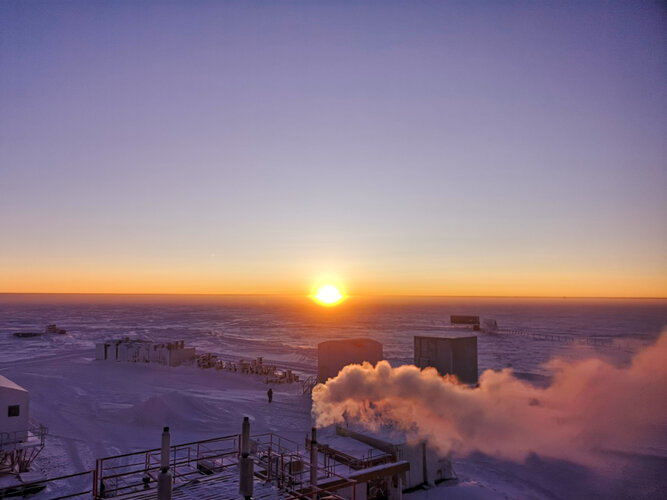 Image:
Image:
After four months of darkness, it is finally time to rise and shine for the crew at Concordia Research Station in Antarctica. The most-welcome Sun finally made its appearance on 11 August and ESA-sponsored medical doctor Nick Smith was not about to miss it.
For nine months Nick and his fellow crew mates have been living and working in one of the most isolated, confined and extreme environments on Earth, with no way in or out of the Station during the winter-over period.
Nick is overseeing experiments in human physiology and biology, atmospheric physics, meteorology, and astronomy, among other disciplines.
Astronauts conduct second Chinese space station spacewalk
Friday, 20 August 2021 07:19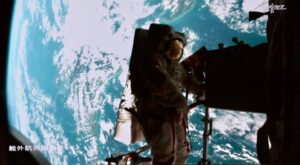
Two Chinese astronauts embarked on a second Shenzhou-12 spacewalk late Thursday to carry out work on a space station robotic arm.
China's astronauts make spacewalk to upgrade robotic arm
Friday, 20 August 2021 06:01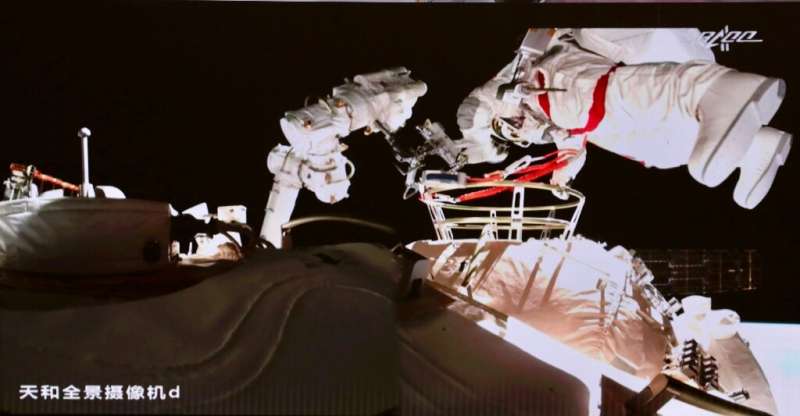
Chinese astronauts edged into space on Friday to add the finishing touches to a robotic arm on the Tiangong space station.
The foray, the second spacewalk in two months and relayed on state television, is part of China's heavily promoted space programme which has already seen the nation land a rover on Mars and send probes to the moon.
In June, three crew arrived at the station, where they are set to remain in space for a total of three months in China's longest crewed mission to date.
Blue Origin suit stops work on NASA HLS contract with SpaceX
Thursday, 19 August 2021 21:45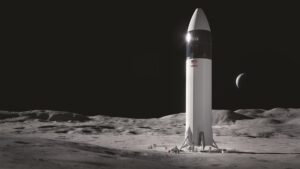
NASA will stop work on a Human Landing System award to SpaceX through the end of October as a federal court takes up a suit filed by Blue Origin protesting the contract.
Netflix announces documentary series on Inspiration4 space mission
Thursday, 19 August 2021 19:52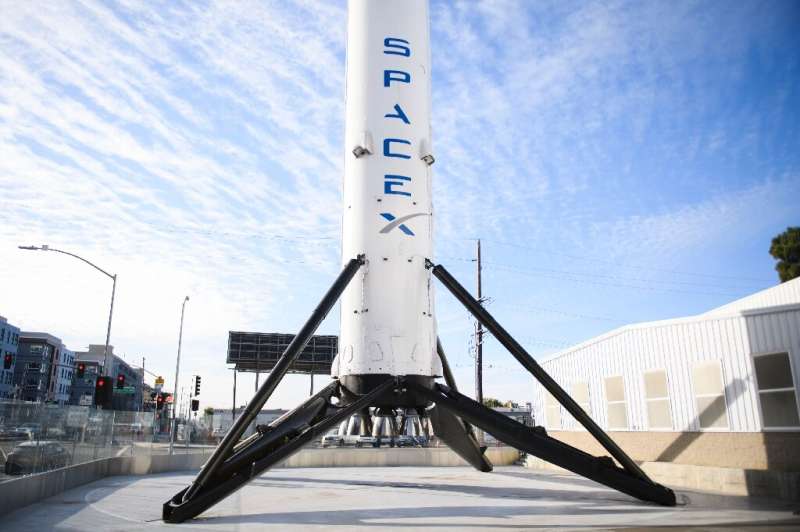
Netflix will soon premiere a documentary series chronicling Inspiration4, the world's first all-civilian space mission, the streaming service said Thursday.
The five-episode show will air in September and will depict how the four-member crew is preparing and then launching into space aboard a SpaceX Falcon 9 rocket, in near real time.
The mission, scheduled for September 15, is financed and run by Jared Isaacman, the 38-year-old founder of payment processing company Shift4 Payments and the latest wealthy businessman to take advantage of the growing space tourism industry.
Isaacman has invited three "everyday" people along with him for the ride: a medical worker, a college professor and an engineer.
The show, titled "Countdown: Inspiration4 Mission To Space" will "take viewers behind the scenes with the four crew members—from their unconventional selection and intensive months-long commercial astronaut training, through the intimate and emotional moments leading up to liftoff," Netflix said in a statement.
Space surveillance sensor supplier Geost acquired by private equity firm
Thursday, 19 August 2021 18:51
Geost, a company that supplies space surveillance sensors to the U.S. military and intelligence agencies, has been acquired by ATL Partners, a private equity firm.
SpaceX wants to give Starship lead role in revised second-gen Starlink plan
Thursday, 19 August 2021 18:27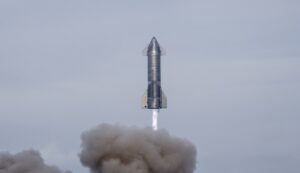
SpaceX is proposing to use Starship to rapidly deploy its second-generation Starlink constellation, providing denser rural coverage without needing more than the 30,000 satellites it previously envisioned for the follow-on network.
Japan aims to bring back soil samples from Mars moon by 2029
Thursday, 19 August 2021 13:37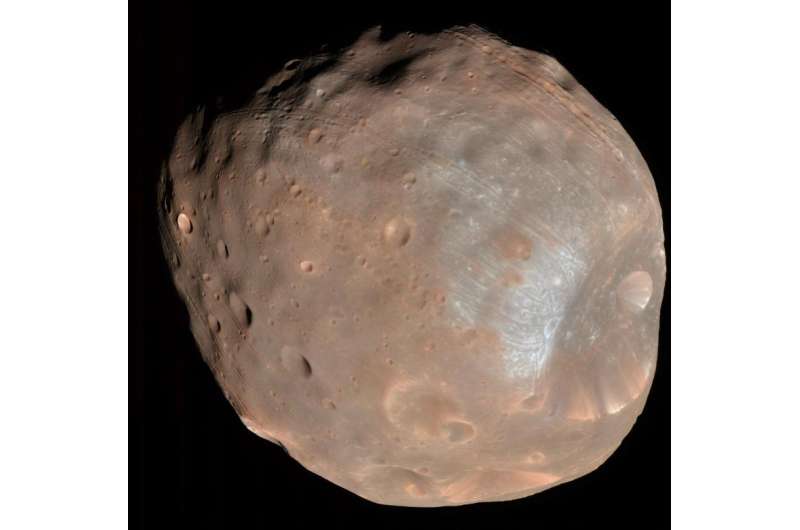
Japanese space agency scientists said Thursday they plan to bring soil samples back from the Mars region ahead of the United States and China, which started Mars missions last year, in hopes of finding clues to the planet's origin and traces of possible life.
The Japan Aerospace Exploration Agency, or JAXA, plans to launch an explorer in 2024 to land on Phobos, a Martian moon, to collect 10 grams (0.35 ounce) of soil and bring it back to Earth in 2029.
The rapid return trip is expected to put Japan ahead of the United States and China in bringing back samples from the Martian region despite starting later, project manager Yasuhiro Kawakatsu said in an online news conference.
Startup raises funding to provide high-resolution imagery from balloons
Thursday, 19 August 2021 13:00
A Colorado startup has raised a seed round of funding to further develop a system that can provide imagery from high-altitude balloons at much higher resolution than satellites.
South Korea to invest $13.6 billion to bolster defenses capabilities in outer space
Thursday, 19 August 2021 11:00
South Korea will invest 16 trillion won ($13.6 billion) over the next 10 years in bolstering its defense capabilities in outer space. This includes 1.6 trillion won to be used to develop “core technologies” for military satellites.

